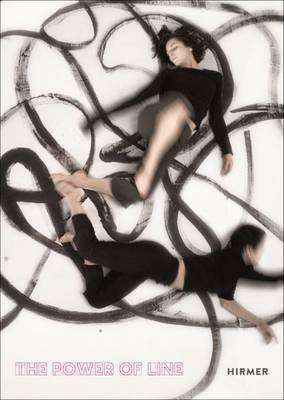The Power of Line : Linea III
- Unit price
- / per
-
Author:FAIETTI Marzia
-
ISBN:9783777424989
-
Publication Date:April 2016
-
Edition:1
-
Pages:260
-
Binding:Hardback
-
Publisher:Hirmer Verlag
-
Country of Publication:Germany


A Back Order button means that we don’t have the book in stock at our store. It may already be on order – or we can order it for you from a publisher or distributor at no additional cost.
As we source items from around the globe, a back-order can take anywhere from 5 days to several weeks to arrive, depending on the title.
To check how long this might take, you’re welcome to contact us and we can provide an ETA or any other information you need. We recommend checking the timeframe before committing to an online order.
The Power of Line : Linea III
- Unit price
- / per
-
Author:FAIETTI Marzia
-
ISBN:9783777424989
-
Publication Date:April 2016
-
Edition:1
-
Pages:260
-
Binding:Hardback
-
Publisher:Hirmer Verlag
-
Country of Publication:Germany
Description
Adding product to your cart
You may also like
A Back Order button means that we don’t have the book in stock at our store. It may already be on order – or we can order it for you from a publisher or distributor at no additional cost.
As we source items from around the globe, a back-order can take anywhere from 5 days to several weeks to arrive, depending on the title.
To check how long this might take, you’re welcome to contact us and we can provide an ETA or any other information you need. We recommend checking the timeframe before committing to an online order.
You may also like
You may also like
-
There are no lines in nature they are always the creation of humans, manifestations of human action, perception, and design. Lines can divide or connect, may be static or full of movement, and represent and create forms in space and time. And in many cultures, lines take center stage in science, art, writing, drawing, and construction. Employing a vast array of academic perspectives, this fascinating collection delves into the phenomenon of the line, as well as the power it holds for us. From the history of art and science to philosophy, the essays in The Power of Line elucidate the semantic and conceptual depth of the line in European, Asian, and Islamic cultures. As they trace the continuity and transformation of the line over the course of centuries, the authors not only reveal it to be a constitutive element in architecture, art, and writing, but also uncover its importance as a medium of expression in both choreography and the scientific and technological fields. With copious full-color images, The Power of Line is a captivating exploration of the line as an essential artistic and cultural means of expression.
-
-
Author: FAIETTI MarziaISBN: 9783777424989Publication Date: April 2016Edition: 1Pages: 260Binding: HardbackPublisher: Hirmer VerlagCountry of Publication: Germany
There are no lines in nature they are always the creation of humans, manifestations of human action, perception, and design. Lines can divide or connect, may be static or full of movement, and represent and create forms in space and time. And in many cultures, lines take center stage in science, art, writing, drawing, and construction. Employing a vast array of academic perspectives, this fascinating collection delves into the phenomenon of the line, as well as the power it holds for us. From the history of art and science to philosophy, the essays in The Power of Line elucidate the semantic and conceptual depth of the line in European, Asian, and Islamic cultures. As they trace the continuity and transformation of the line over the course of centuries, the authors not only reveal it to be a constitutive element in architecture, art, and writing, but also uncover its importance as a medium of expression in both choreography and the scientific and technological fields. With copious full-color images, The Power of Line is a captivating exploration of the line as an essential artistic and cultural means of expression.-
Author: FAIETTI MarziaISBN: 9783777424989Publication Date: April 2016Edition: 1Pages: 260Binding: HardbackPublisher: Hirmer VerlagCountry of Publication: Germany
-



